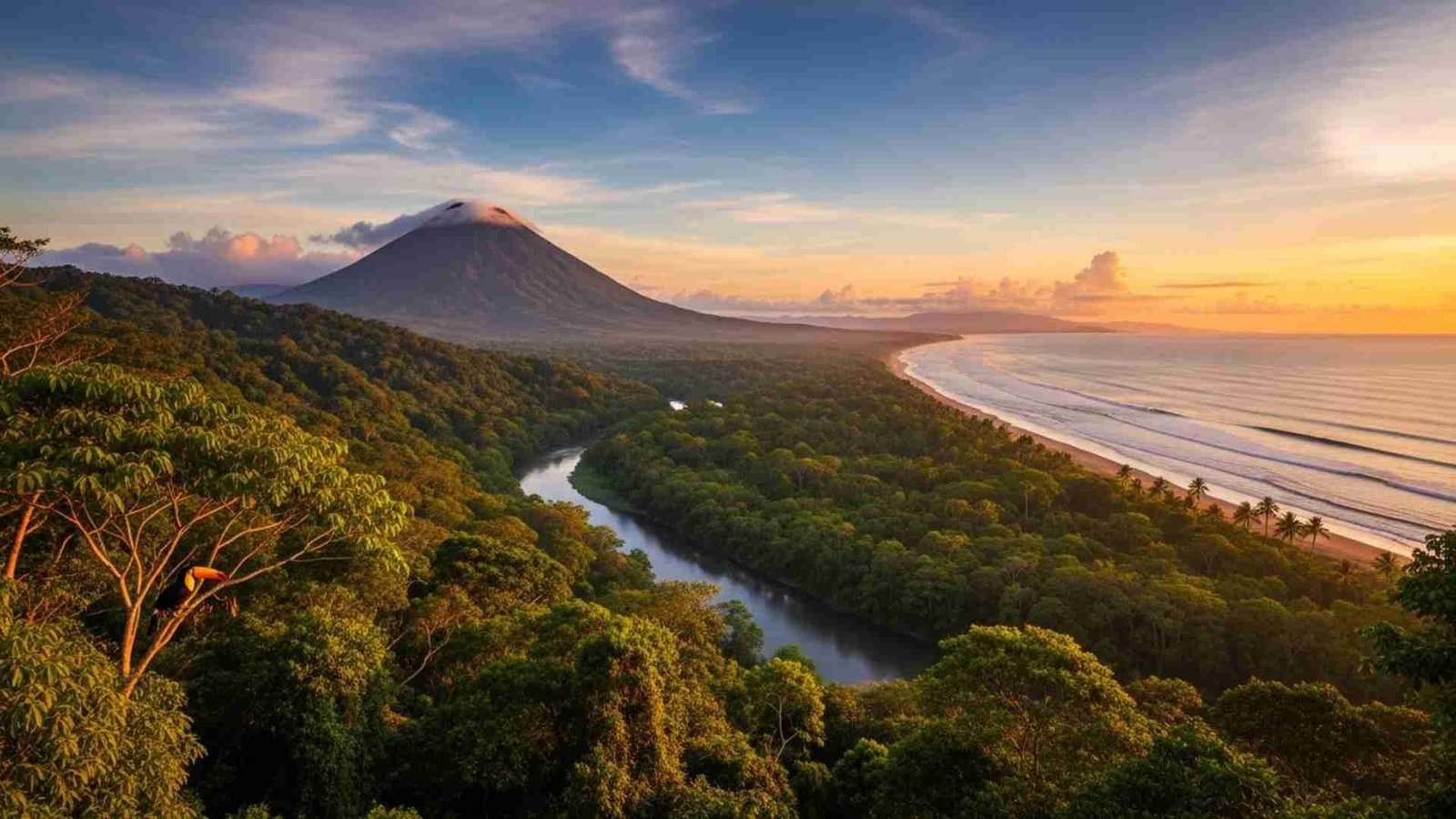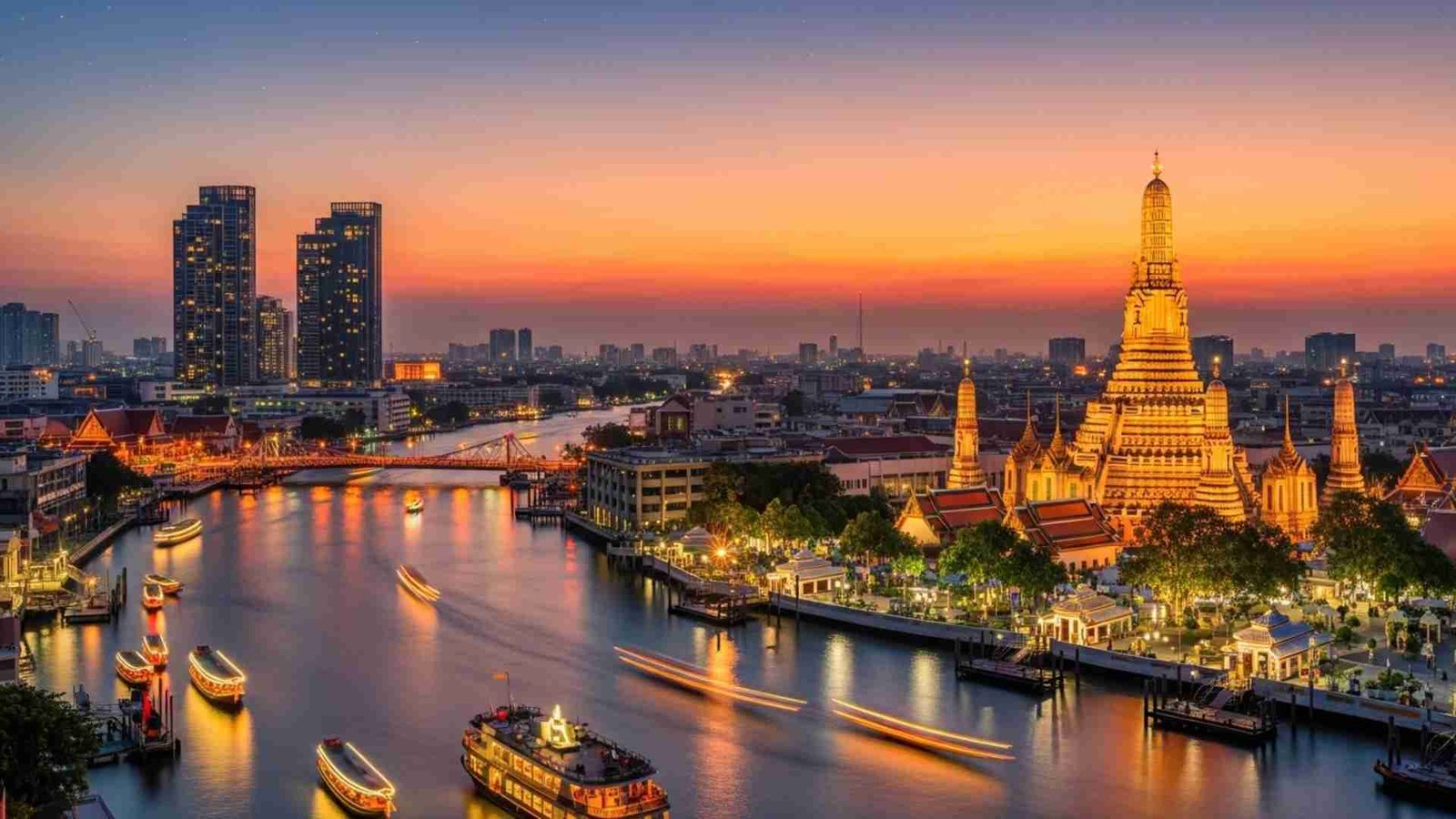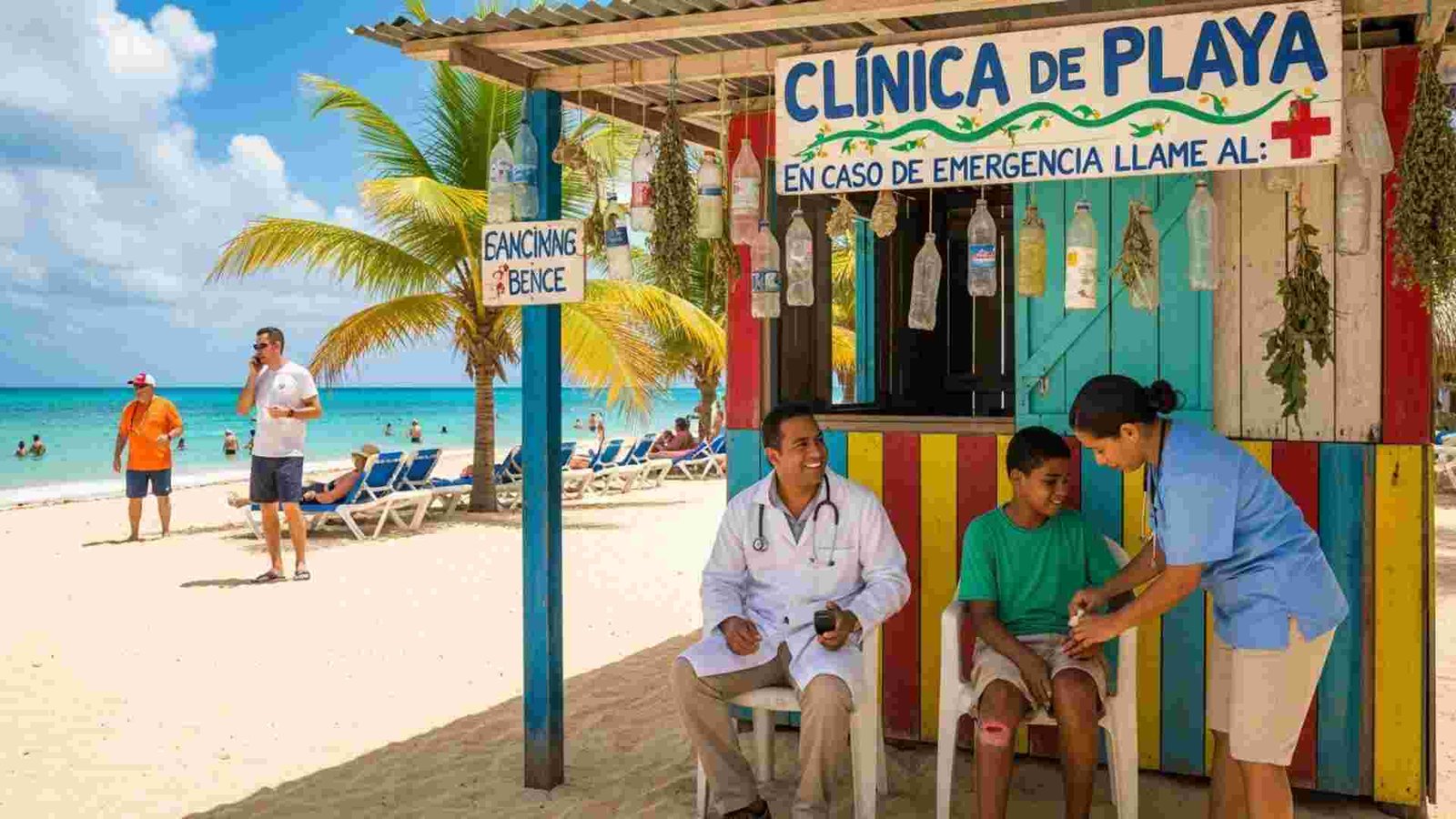

Rent feels heavier, hospital bills louder, yet your passport quietly holds an escape hatch. You step off a plane into warm air that smells like street food and sea salt, where a doctor’s visit costs less than dinner back home and rent doesn’t steal your sleep.
curiosity, possibility, the sense that life doesn’t have to feel this hard. In this guide, we’ll explore where people are quietly starting over, trading anxiety for access, and spreadsheets for sunsets. Along the way, you’ll see how ordinary Americans are finding healthcare, homes, and a whole new rhythm of living.
1. Portugal

And this first one—Portugal—really delivers on affordable living + decent healthcare. You know that moment when you realise you can stretch your dollar (or euro) further? Portugal gives you that. According to a 2025 comparison, the cost of living there is about 45% lower than in the U.S. for similar lifestyle levels. For example, one study suggested a comfortable budget for a single person is ~€1,773/month.
Portugal is rated highly for quality. According to one 2025 report, it ranks 4th globally for healthcare quality. Public system costs are low — many services are subsidised or free at point of delivery for residents. One site lists monthly household healthcare costs at just ~€81 in 2025.
Practical Information
- Peak/Off-peak seasons & weather insights: Peak summer (July-Aug) can be hot and busy; off-peak spring/fall are better.
- Best ways to reach/explore: Major airports in Lisbon (LIS) or Porto (OPO); good train links and car rental for countryside/coast.
- Ideal duration: Visit for a week or two; consider 3–6 months if considering relocation.
- Must-try local experiences: Riding the tram in Lisbon, tasting pastel de nata gets you hooked, surfing in Nazaré or the Algarve coast.
- Budget considerations: Choose smaller towns outside major tourist zones to cut rent/housing costs.
- Cultural etiquette tips: Simple Portuguese greetings go a long way; locals appreciate you trying the language.
- Photography opportunities: Golden-hour light on tiled rooftops in Lisbon, dramatic beaches on the west coast, vineyards in the Douro valley.
2. Mexico

Mexico — brings a whole different flavour, more vibrant, more colours, and strong on the value front. On the cost side: A recent guide found that a family of four in Mexico might spend around US$2,335/month in some popular expat-friendly cities. And healthcare? Big savings. A doctor’s visit in a private clinic might only cost US$30–50, compared to US$150–200 in the U.S. Even major surgeries like knee replacements are much cheaper.
Mexico offers ancient ruins, beach destinations, colonial towns, urban centres — all in one country. Big plus: many towns have well-equipped private hospitals with English-speaking doctors especially in expat hubs. If you flew from the U.S., you’d often find direct flights, making access easy.
Practical Information
- Peak/Off-peak & weather: Beach zones: Nov–Apr dry; summer rainy. Inland highlands: more stable.
- Best ways to reach/explore: Major airports (Mexico City, Cancun, Guadalajara); local flights/buses for regional movement.
- Ideal duration: Short visit 1-2 weeks; test living 3-6 months.
- Must-try local experiences: Street-food markets (tacos, local flavours), visiting Mayan/Aztec sites (Teotihuacán etc.), beach relaxation in Yucatán.
- Budget considerations: In smaller cities rentals under US$600/month are possible for 1–2 bedrooms. But imported goods may cost more, and private insurance is wise for peace of mind.
- Cultural etiquette tips: A few Spanish phrases help; show respect in local communities, keep an open mind.
- Photography opportunities: Vibrant market colours, colonial architecture, coastal sunrise/sunset, jungle/ruin combinations.
3. Costa Rica

Then there’s Costa Rica — lush, relaxed, nature-rich, and quite appealing for people wanting decent value + lifestyle. Let’s talk numbers: For a single person (excluding rent) one recent guide puts monthly living expenses around US$913/month in some areas. And generally, cost of living in Costa Rica is about 30-50% lower than in the U.S. when you adopt a local lifestyle. Healthcare: Services typically cost 50-80% less than comparable services in the U.S. in private facilities.
Mountains, rainforests, Pacific & Caribbean coasts, wildlife — this place is full of life. For visitors best seasons for dry/sun are roughly December to April. For off-peak you’ll still get beauty with fewer crowds and lower rates. Ideal duration: short visit 1–2 weeks; exploration/living test 3–6 months or more. Private insurance plans for expats are affordable (for example $50–$400/month depending on visa/residency type).
Practical Information
- Peak/Off-peak seasons & weather: Dry season Dec–Apr; rainy season May–Nov (but rain often in afternoon, mornings still good).
- Best ways to reach/explore: San José (SJO) and Liberia (LIR) airports; rental car recommended for flexibility.
- Ideal duration: Visit 1-2 weeks; living-test 3+ months to explore coast + mountains.
- Must-try local experiences: Zip-lining in cloud forest, hot springs by volcanoes, local “sodas” (small eateries) for authentic cuisine.
- Budget considerations: Inland and less tourist-heavy areas significantly cheaper; imported goods cost more.
- Cultural etiquette tips: Casual, friendly locals; learning a bit of Spanish goes far; respect nature & local communities.
- Photography opportunities: Misty rainforest mornings, monkeys or sloths in trees, pristine beaches, volcano silhouettes.
4. Spain

Spain — a fantastic mix of rich culture, strong infrastructure, and better value than many think. On the cost/health side: For healthcare, 83% of expats in one 2025 survey said Spain’s healthcare is affordable vs global 59% average; 82% said easily available. Additionally, the Spanish system covers 99.5% of the population and the country boasts top life-expectancy in Europe. In terms of cost of living: Though it varies by city, moving there is often more affordable than many Western neighbors.
Spain delivers beaches (Costa Brava, Andalusia), rich history (Granada, Seville), city energy (Madrid, Barcelona). Best seasons: late spring (May–June) or early autumn (September) are sweet — good weather, fewer tourists. Ideal duration: 1–2 weeks for visit; 1–3 months to really get a feel.
Practical Information
- Peak/Off-peak seasons & weather: Summer (July-Aug) hot and busy; spring/fall more comfortable; winter mild in many parts.
- Best ways to reach/explore: Many international airports (Madrid, Barcelona, Malaga); efficient trains for inter-city travel.
- Ideal duration: Visit 1–2 weeks; for immersion consider 1–3 months.
- Must-try local experiences: Tapas hopping at dusk, flamenco show, wandering historic town centres, weekend beach escape.
- Budget considerations: Big city centre apartments cost more; smaller towns or suburbs get you more value.
- Cultural etiquette tips: Meal times late—lunch ~2pm, dinner ~9pm; basic Spanish greetings appreciated.
- Photography opportunities: Sunset over Seville’s cathedral, street life in Barcelona, olive-grove landscapes in Andalusia.
5. Thailand

Finally, we land in Thailand — think tropical, vibrant, full of life and surprisingly strong on value + good healthcare for expats. On costs: A 2025 guide shows a single retiree may expect US$1,500-2,500/month, while a family of four may budget US$2,500-4,000/month depending on location and lifestyle. For healthcare: Thailand boasts more than 60 JCI-accredited hospitals and private care costs are about 30-60% lower than in Western countries.
Bangkok’s sizzling city energy, then you can swing north to Chiang Mai for calmer temple-and-mountains vibe; or drift south to islands like Phuket or Koh Samui. Best seasons: November–February are dry and cool; May–Oct is wetter/humid but less crowded.
Practical Information
- Peak/Off-peak seasons & weather: Peak dry season Nov–Feb; rainy/humid season May–Oct with tropical downpours.
- Best ways to reach/explore: Bangkok’s Suvarnabhumi (BKK) big hub; domestic flights + ferries for islands; train/bus to north.
- Ideal duration: Visit 1-2 weeks; living test 2-3 months.
- Must-try local experiences: Night markets in Bangkok, temple-hopping in Chiang Mai, island-hopping in the south, Thai cooking class.
- Budget considerations: Big cities or tourist islands cost more; peripheral towns often lower rent/housing. Import/luxury goods can be pricey.
- Cultural etiquette tips: Respect temples (cover shoulders/knees), “wai” greeting, no public disrespect to the royal family or Buddha images.
- Photography opportunities: Golden-temple spires, bustling street-food alleys lit up at night, beach sunsets with longtail boats.
6. Colombia – Everyday Life With “Big City Energy, Small Budget Bills”

Colombia isn’t just Cartagena postcards and coffee tours. The real story is how ordinary life feels here when you’re paying far less than you would in the States. One 2025 guide estimates the overall cost of living is about 60% lower than in the U.S., mainly thanks to cheaper housing and healthcare.And the healthcare piece is serious, not an afterthought: the WHO has ranked Colombia’s universal system ahead of countries like the U.S. and Canada for patient outcomes, which is wild when you remember what a single ER visit costs back home.
you’re based in Medellín or Bucaramanga, working remotely on U.S. hours. You grab a good cappuccino, hop a modern metro line, and your rent for a decent apartment can still sit under US $700 in many neighbourhoods. Groceries, local produce, basic services — all noticeably cheaper than North America.different pace, different bureaucracy, different noise levels. But for a lot of Americans, the math plus the lifestyle is worth it.
Practical Information
- Best base cities: Medellín for spring-like weather all year, Bogotá for big-city culture, coastal towns for heat + Caribbean vibes.
- Climate & timing: Many regions sit near “eternal spring” (Medellín averages ~72°F / 22°C); rain often comes in short bursts rather than all-day storms.
- Healthcare access: Mix of public EPS plans and private insurance; expats often combine both for flexibility and faster appointments.
- Good fits: Remote workers who want city amenities on a smaller budget, and people who like Spanish-speaking urban life more than beach-only living.
7. Vietnam – Ultra-Affordable Life On Fast-Forward

Vietnam is where the word “affordable” starts to feel almost unreal. Recent data suggests the cost of living is over 60% lower than in the U.S., including rent.InterNations’ Expat Insider survey has named Vietnam the world’s most affordable country multiple years running, and in 2024 more than 86% of expats rated the cost of living positively.You see this when expats talk about paying £180/month for an apartment near the beach in Da Nang, grabbing coffee for around 50p, and rarely crossing £1 for a simple local lunch.
Streets buzz with scooters, tiny metal stools spill onto sidewalks, and there’s always a food smell drifting around the corner. You can earn a Western or remote salary, then watch your purchasing power grow like crazy. One expat-focused insurer notes that Vietnam’s low costs combined with relatively strong expat salaries, especially in tech and services, mean many foreigners enjoy a much higher standard of living than they had at home.
Practical Information
- Best rhythm: November–March for cooler, drier weather in many regions; the rest of the year mixes heat with monsoon patterns depending on north/central/south.
- Healthcare: Big cities like Hanoi, Ho Chi Minh City, and Da Nang have private hospitals geared toward expats; costs are typically a fraction of U.S. prices.
- Who it suits: Digital nomads and early-career Americans who’d rather trade long commutes and high rent for dense city life, low bills, and frequent street-food runs.
- Bonus: Strong photography potential — terraced rice fields, lantern-lit streets in Hội An, and chaotic scooter traffic that somehow just flows.
8. Ecuador – “Small Country, Big Healthcare Hack”

Ecuador flies under the radar for many Americans, which is exactly why it’s interesting. A 2024–25 breakdown aimed at North American expats shows just how far your money can go: rent, utilities, and groceries combine into some of the lowest monthly totals in South America, even in popular expat cities like Cuenca, Loja, and Quito. The big headline, though, is healthcare. Foreigners can buy into the national IESS public health system for around US $79 a month (about US $95 for a couple) and get access to hospitals and clinics across the country.
And that’s just one layer. Many procedures in Ecuador’s private system can cost as little as 15–20% of U.S. prices, which is why a lot of retirees and long-stay visitors mix public coverage with occasional private care for speed or comfort. So you’re not just reducing rent; you’re lowering the risk of a single medical bill wrecking your budget. Add in mild climates (especially in the “spring-like” highland cities), and it starts to look like a clever long-term base rather than a one-off trip.
Practical Information
- Best climates: Highland cities like Cuenca offer cool, steady temperatures year-round; coastal areas are warmer and more humid.
- Lifestyle: Great for slower-paced living, access to markets full of fresh fruit, and weekend trips to cloud forests or the Andes.
- Healthcare setup: Public IESS + optional private insurance gives you a strong safety net without U.S.-style premiums.
- Best for: Retirees and remote workers who want a calm base, stable weather, and the option to stretch savings for years, not months.
9. Malaysia – Quiet Superstar Of Medical Tourism

Malaysia is where a lot of people go for surgery or treatment, then quietly realise they could just…stay. A 2025 report highlights that utilities like electricity, water, and internet stay relatively affordable thanks to subsidies, which helps keep overall living costs low for retirees and expats. On top of that, Malaysia just ranked number one globally as a preferred medical tourism destination, outranking places like Singapore and Turkey.
That ranking isn’t just marketing. The country has internationally accredited hospitals, English-speaking doctors, and medical costs that come in way below what Americans are used to paying. One recent analysis notes that strong hospital infrastructure plus low costs make Malaysia an unusually good deal for long stays focused on both lifestyle and health. condo in Kuala Lumpur or Penang, modern malls and hawker centres nearby, weekend flights around Southeast Asia, and access to world-class cardiology or dental care without going into debt.
practical Information
- Best hubs: Kuala Lumpur for big-city feel; Penang or Johor Bahru for a slower pace but still good services.
- Weather: Tropical all year; expect heat and humidity with brief, regular bursts of rain rather than long gray winters.
- Healthcare angle: Excellent for scheduled procedures and ongoing care; many expats fly in specifically to combine treatment and travel.
- Ideal audience: Americans who care as much about reliable hospitals and easy English communication as they do about low rent.
10. Panama – Compact Gateway With “Two-Track” Healthcare

Panama feels like a cheat code if you want North-South hybrid living. On paper, the country’s overall cost of living is significantly lower than many Western countries, with one 2024 breakdown noting living costs around 29% lower than in France, and similar comparisons against North American cities. Rent for a furnished one-bedroom home often lands between US $600–1,500, depending on whether you’re in Panama City, Boquete, or a coastal town.
Healthcare is where Panama stands out in a slightly different way. The country runs a tax-funded public system through two agencies (CSS and MINSA) that offers low-cost care for most residents. At the same time, there’s a private tier with modern hospitals and doctors, many of whom trained in the U.S. or Europe and are legally required to also work some hours in the public system. Most expats end up using private hospitals for comfort and speed, while still benefiting from the overall low-cost environment.
Practical Information
- Lifestyle: Mix of modern capital city, mountain towns popular with retirees, and Pacific/Caribbean coasts.
- Connectivity: Good air links to North and South America; Panama City is a major regional hub.
- Healthcare setup: Public CSS/MINSA for low-cost basics, private hospitals for higher-end care; many expats carry international or local private insurance.
- Who it fits: Americans who want a relatively short flight home, the option to live in a smaller town, and a manageable healthcare + rent combo without going too far off the grid.
11. Argentina – “Café Culture, High Inflation, Surprisingly Manageable Life”

Argentina is a bit of a paradox, and that’s exactly what makes it interesting for Americans. On one hand, you’ve got world-class steak, elegant old cafés, and leafy neighborhoods in Buenos Aires that feel like a mashup of Paris and Madrid. On the other, you’re dealing with high inflation and currency swings. The twist? For people arriving with dollars, day-to-day costs can feel shockingly low. Recent 2025 estimates show a single person’s total monthly costs, including rent, around €870, while a family of four might sit near €2,750 depending on city and lifestyle.
Healthcare adds another layer. Argentina has a mixed system with public, social security, and private providers. In 2025, free public healthcare for foreigners without permanent residency was officially cancelled, but many public hospitals still treat non-residents at little or no cost in practice, especially in emergencies. you get shorter waits, more comfort, and still pay far less than in the U.S.. One 2025 guide for expats notes that Argentina’s private sector offers high-level care at prices “generally lower than Western countries,” with many doctors trained abroad and comfortable in English.
Prctical Information
- Hidden gem base: Buenos Aires’ Colegiales or Caballito instead of Recoleta/Palermo for cheaper rent but very local feel.
- Cost pulse: Inflation is wild, but paying in stable foreign currency often makes housing, dining out, and services feel “on sale.”
- Healthcare move: Use public hospitals for emergencies; buy a private plan or pay cash at private clinics for routine care and faster service.
- Easy win experience: Long, lazy afternoons in classic cafés, Sunday markets in San Telmo, day-trips to Tigre delta for river life.
12. Dominican Republic – “Beach Life With Local Clinics On Speed Dial”

ost people only see the Dominican Republic from behind an all-inclusive wristband. The hidden story is what life looks like once you step out of the resort bubble and rent a place in a local town like Sosúa, Las Terrenas, or Jarabacoa. A 2024–25 expat guide suggests that a comfortable monthly income of US $2,000–4,000 is plenty for foreigners, including rent, food, and getting around. That range usually covers a decent apartment, utilities, local groceries, and regular trips to the beach.
Healthcare is more layered than people expect. For long-term stays, most expats grab local private health insurance. A 2025 breakdown shows local plans starting around US $80–150 per month, depending on age and coverage. Many expat neighborhoods sit within short driving distance of private clinics or hospitals in cities like Santiago and Santo Domingo, which means you’re not far from decent care even if you live in a smaller coastal town. Public hospitals exist, but for speed and comfort, most foreigners lean on private providers plus insurance.
Prctical Information
- Unexpected gems: Small towns like Las Terrenas or Cabarete give you beaches + local life without resort pricing.
- Everyday budget: Street food and local markets keep grocery bills low; imported goods and big-name brands bump costs up.
- Healthcare tactic: Pair a local insurance plan with a short list of go-to clinics; most expats share recommendations inside local Facebook groups and forums.
- Where it shines: Americans who want warm water, a flight that isn’t too long, and a cost of living that still leaves room in the budget for travel days.
13. Philippines – “Where English, Warmth, And Low Costs Line Up”

The Philippines is one of those places that keeps quietly popping up on “best places to retire” lists, and it’s not hard to see why once you dig into the numbers. A 2024 analysis pegs average monthly living costs for a single person around PHP 25,000–35,000 (roughly US $440–620 at recent rates) including rent, food, utilities, and transport. A 2025 retirement piece estimates that many couples live comfortably in popular areas on US $1,200–2,500 per month, depending on lifestyle. For Americans, that can mean trading a cramped apartment for a bigger condo, or swapping suburbia for an island town where the tricycle driver knows your name.
Healthcare is a bit “two-speed.” Costs are much lower than in the U.S., especially at private hospitals in Manila, Cebu, Davao, or Makati. A recent guide suggests HMO-style local health plans can run 10,000–60,000 PHP per year (roughly US $175–1,050), while more comprehensive private insurance starts around 40,000 PHP per year. Public PhilHealth coverage exists and SRRV (retiree visa) holders are usually required to join, but most expats still keep private insurance for major issues and shorter wait times.
Prctical Information
- Best suited to: Americans who want English to be widely spoken, low living costs, and island or small-city life.
- Hidden gem spots: Dumaguete, Iloilo, and smaller cities where expat communities exist but haven’t overwhelmed local culture yet.
- Healthcare reality: Great private care in big cities; quality drops once you head into rural or remote islands, so serious care may mean a flight.
- Visa/retirement angle: The SRRV retiree visa offers multiple entry, tax perks on foreign pensions, and access to PhilHealth; many use it as a base to bounce around Southeast Asia.
14. Hungary – “Old-World Europe Without Old-World Prices”

Hungary closes your list, and it does it with that classic Central European charm plus some very practical math. A 2024–25 cost of living guide notes that Hungary’s overall expenses are about 40% lower than in France, with big savings in rent and daily shopping. Another expat-focused breakdown says international students and many expats manage on roughly €700/month outside of the priciest neighborhoods in Budapest. You’re talking tram rides along the Danube, thermal baths on the weekend, and still enough left over at the end of the month to stash some savings or travel.
Healthcare is where Hungary quietly punches above its weight. Most healthcare services are free at the point of use for people covered by the national system, with citizens (and eligible residents) paying monthly insurance contributions. Many expats add private insurance for faster access and English-speaking doctors, typically paying €30–100/month for individuals and €80–200/month for families. Compared to U.S. premiums, that’s a huge step down, and the quality of care in Budapest especially is solid.
Prctical Information
- Daily reality: Affordable public transport (monthly pass in Budapest around €25), cheap produce at local markets, high heating costs only in the coldest months.
- Healthcare strategy: Get registered for the public system if you qualify, then layer a private policy on top for fast appointments and better English support.
- Why it fits this list: You get Schengen access, historic streets and baths, and a cost structure that still feels friendly even if you’re not retired yet.
- Where to base yourself: Budapest for culture and connections; Szeged, Pécs, or Debrecen for lower rents and more local rhythm.
Conclusion:
In the end, this isn’t just a list of cheaper places to live. It’s a reminder that you’re allowed to question the script, to ask why rent and hospital bills have to hurt this much, and to step toward a life that feels lighter. These 14 countries show that affordable healthcare and livable housing aren’t fantasy perks, but everyday realities for millions of people. The next move might be a scouting trip, a long stay, or a full-on relocation. Whatever you choose, you now have a map that proves you’ve got more options than you were ever told.






